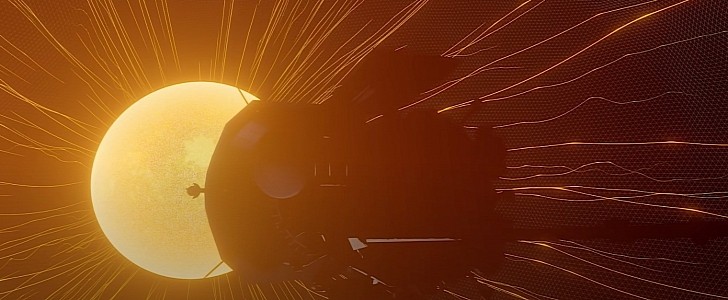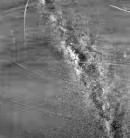Back in 2018, NASA launched something it dubbed at the time the fastest spacecraft ever made by humans. Capable of reaching speeds of 430,000 miles per hour (692,000 kph) when aided by celestial mechanics, the Parker Solar Probe has just one mission: take several very close looks at the Sun.
Scheduled to spend about seven years in space (thus, there are just three more left), the Parker was created and is run by the Johns Hopkins Applied Physics Laboratory (APL) with the goal of exploring the Sun and how its moods affect us here on Earth.
On September 6, Parker is getting ready to come closest to the Sun for the 13th time out of a total of 24 perihelion approaches. Being the 13th such pass means NASA knows by now what to expect, but that doesn’t stop scientists from being a bit excited.
You see, these days (during what it’s known as Solar Cycle 25) our star is in a bad mood, a state of affairs that will continue until about 2030. We know of a sunspot the size of Earth scaring the Sun’s surface, and flares and geomagnetic storms that are increasing in intensity, expected to peak three years from now.
This makes the upcoming Parker approach very different from previous ones, with Nour Raouafi, Parker Solar Probe project scientist over at APL, saying “when the Sun changes, it also changes the environment around it. The activity at this time is way higher than we expected.”
Parker will get within 5.3 million miles (8.52 million km) from the Sun, but this may be the first time it’ll have to fly through a solar flare or coronal mass ejection. And if you think that’ll be a bad thing, think again: scientists expect that if such a thing happens, the “data would be groundbreaking.”
On September 6, Parker is getting ready to come closest to the Sun for the 13th time out of a total of 24 perihelion approaches. Being the 13th such pass means NASA knows by now what to expect, but that doesn’t stop scientists from being a bit excited.
You see, these days (during what it’s known as Solar Cycle 25) our star is in a bad mood, a state of affairs that will continue until about 2030. We know of a sunspot the size of Earth scaring the Sun’s surface, and flares and geomagnetic storms that are increasing in intensity, expected to peak three years from now.
This makes the upcoming Parker approach very different from previous ones, with Nour Raouafi, Parker Solar Probe project scientist over at APL, saying “when the Sun changes, it also changes the environment around it. The activity at this time is way higher than we expected.”
Parker will get within 5.3 million miles (8.52 million km) from the Sun, but this may be the first time it’ll have to fly through a solar flare or coronal mass ejection. And if you think that’ll be a bad thing, think again: scientists expect that if such a thing happens, the “data would be groundbreaking.”




















